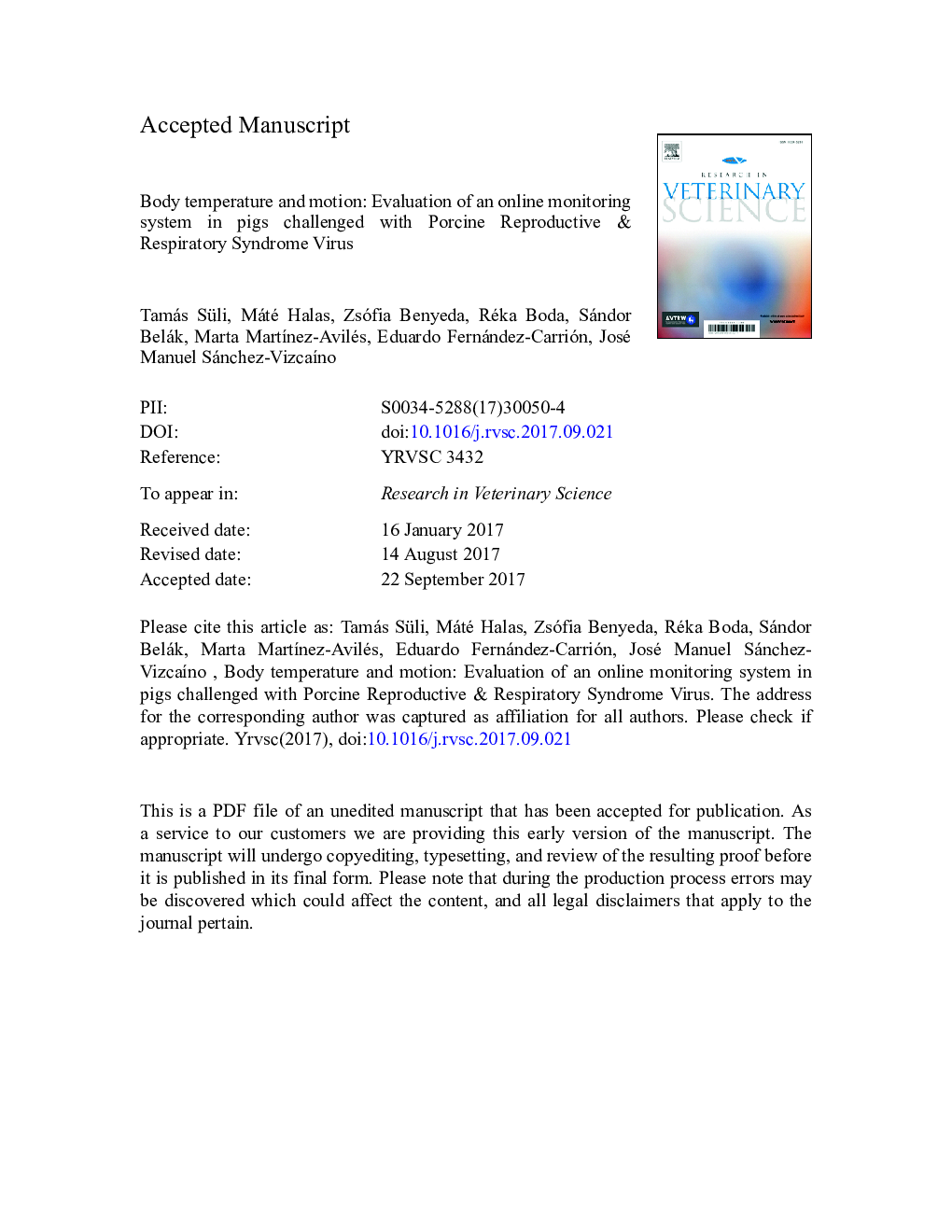| Article ID | Journal | Published Year | Pages | File Type |
|---|---|---|---|---|
| 5543946 | Research in Veterinary Science | 2017 | 24 Pages |
Abstract
Highly contagious and emerging diseases cause significant losses in the pig producing industry worldwide. Rapid and exact acquisition of real-time data, like body temperature and animal movement from the production facilities would enable early disease detection and facilitate adequate response. In this study, carried out within the European Union research project RAPIDIA FIELD, we tested an online monitoring system on pigs experimentally infected with the East European subtype 3 Porcine Reproductive & Respiratory Syndrome Virus (PRRSV) strain Lena. We linked data from different body temperature measurement methods and the real-time movement of the pigs. The results showed a negative correlation between body temperature and movement of the animals. The correlation was similar with both body temperature obtaining methods, rectal and thermal sensing microchip, suggesting some advantages of body temperature measurement with transponders compared with invasive and laborious rectal measuring. We also found a significant difference between motion values before and after the challenge with a virulent PRRSV strain. The decrease in motion values was noticeable before any clinical sign was recorded. Based on our results the online monitoring system could represent a practical tool in registering early warning signs of health status alterations, both in experimental and commercial production settings.
Related Topics
Life Sciences
Agricultural and Biological Sciences
Animal Science and Zoology
Authors
Tamás Süli, Máté Halas, Zsófia Benyeda, Réka Boda, Sándor Belák, Marta MartÃnez-Avilés, Eduardo Fernández-Carrión, José Manuel Sánchez-VizcaÃno,
